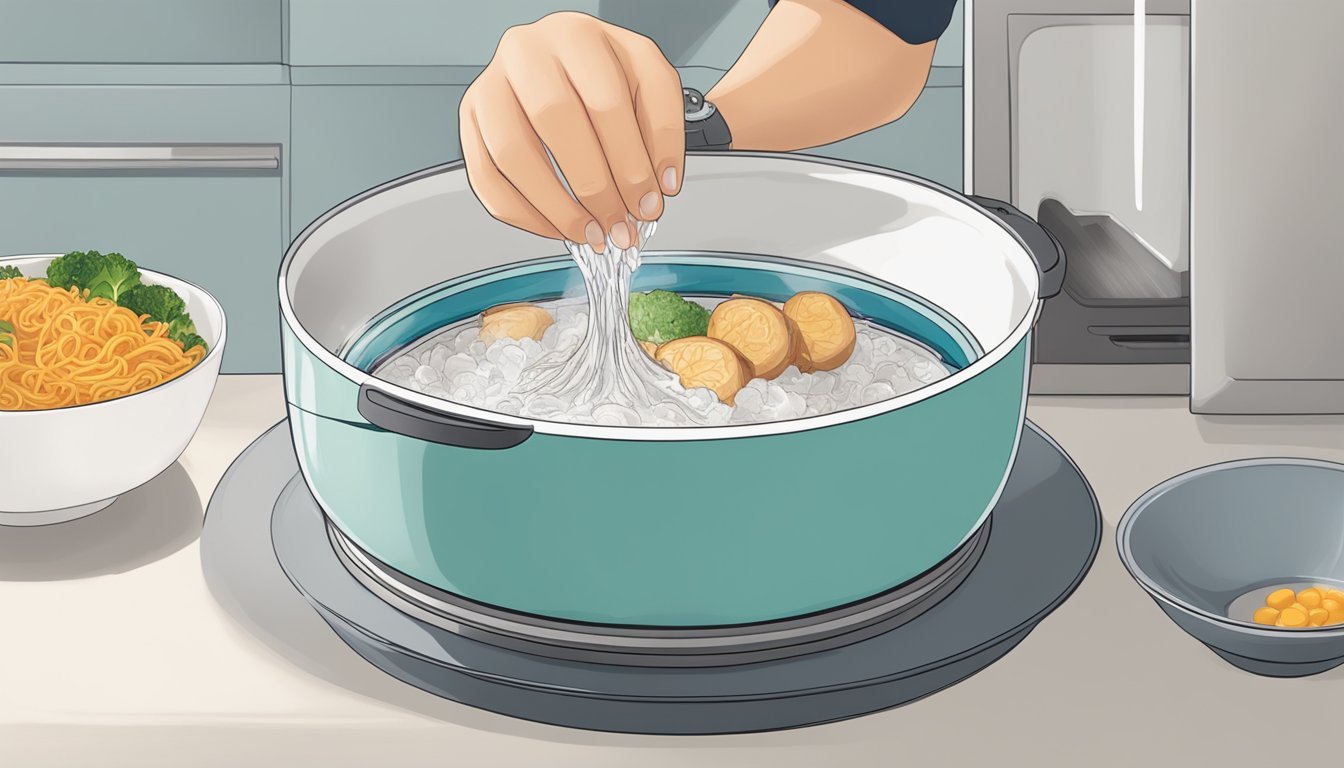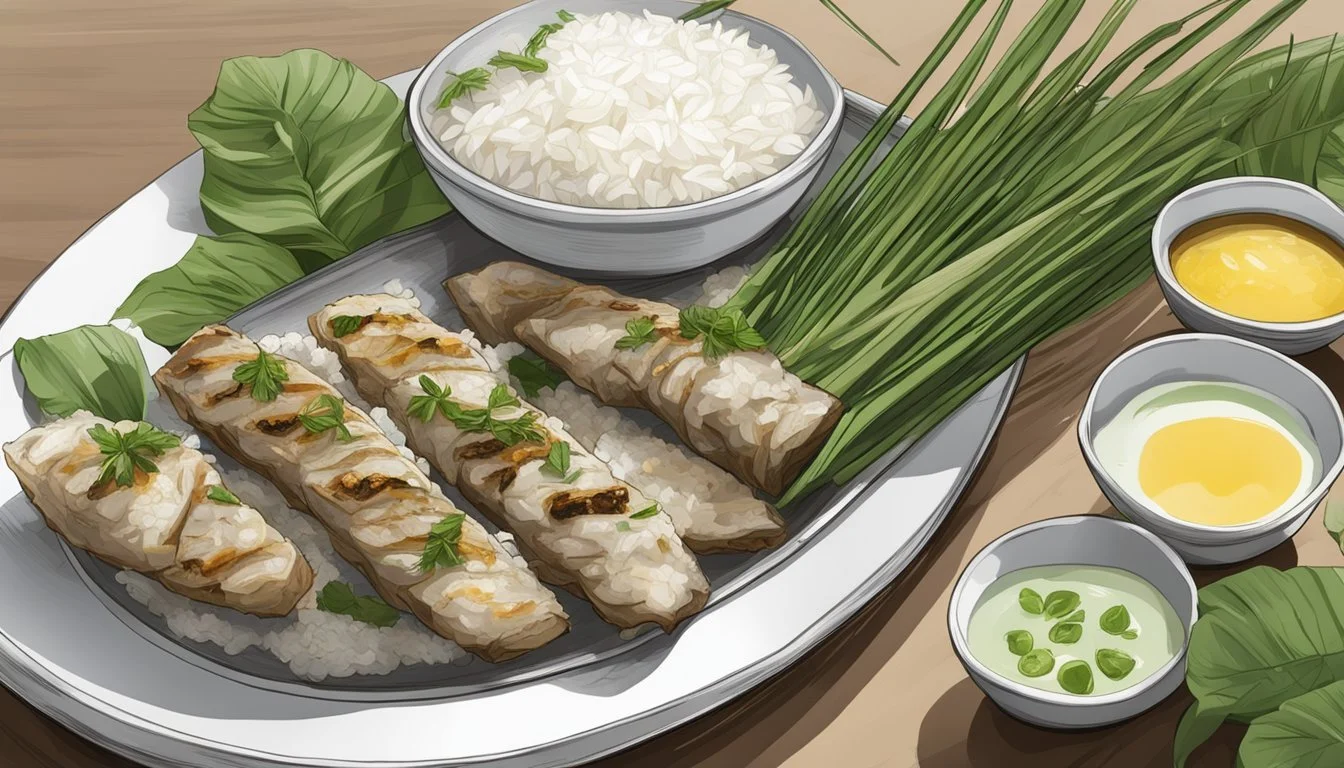Best Way to Reheat Sai Ua
Preserving the Authentic Lemongrass Aroma
Sai Ua, a Northern Thai sausage, is renowned for its rich blend of aromatic herbs and spices, with lemongrass being a prominent flavor. This culinary delight, often characterized by its robust taste and smoky notes from grilling, is a favorite among Thai cuisine aficionados. When it comes to reheating Sai Ua, the key is to preserve its distinct lemongrass essence and ensure that the sausage maintains its juiciness and texture.
Reheating Sai Ua is more nuanced than simply warming up a dish; it's about revitalizing the sausage's inherent flavors that might have been subdued in the cooling process. The challenge lies in applying gentle heat in a way that encapsulates the vibrance of its fresh-off-the-grill taste. A variety of methods can be employed to achieve this, from pan-frying to steaming, each bringing out different aspects of Sai Ua's complex flavor profile.
Selecting the best reheating technique is a matter of balancing efficiency with a careful approach to flavor retention. It's essential to consider the tools available and the amount of time one is willing to dedicate to the process. The ultimate goal when warming Sai Ua is to reach an even internal temperature, reactivate the essential oils in the lemongrass, and ensure a delectable eating experience that mirrors its original preparation.
Understanding Sai Ua's Unique Flavor Profile
Sai Ua, the Northern Thai sausage, is renowned for its complex and vibrant flavor profile, heavily reliant on the aromatic contribution of lemongrass and a signature blend of herbs and spices. The quality and freshness of these ingredients are crucial to achieving the authentic taste and aroma of this Thai delicacy.
Role of Lemongrass and Herbs
Lemongrass is at the heart of Sai Ua's flavor, offering a citrusy and slightly minty profile that is unmistakable. When combined with other fresh herbs like cilantro and kaffir lime leaves, the result is a sausage that is not only flavorful but also aromatic. The selection of herbs directly influences the overall sensory experience of the sausage.
Lemongrass: Imparts a fresh, lemony fragrance and taste.
Kaffir Lime Leaves: Adds a distinct, zesty tang and floral notes.
Cilantro: Contributes a refreshing and slightly peppery touch.
Influence of Traditional Spices
The spices used in Sai Ua are pivotal in defining its unique taste. Key spices include turmeric, which offers earthy tones and a vibrant color, and galangal, which provides a sharp spiciness that differentiates it from ginger. Ground chili adds heat that balances against the other flavors, catering to those who enjoy a spicy kick.
Turmeric: Provides depth of flavor and a golden hue.
Galangal: Delivers a pungent, sharp taste and is essential in Thai cooking.
Chili: Responsible for Sai Ua's characteristic spiciness.
Importance of Fresh Ingredients
For Sai Ua, the freshness of the ingredients is fundamental in preserving the intended flavors and aromas. Fresh ingredients ensure that the lemongrass aroma is prominent and that the spices deliver their full potency, creating a harmonious and authentic northern Thai sausage experience.
Freshness: A key factor for maintaining the potency of flavors and aromas.
Ingredients: Must be carefully selected to ensure quality and authenticity.
Incorporating these elements is essential in creating a Sai Ua with a flavor profile that is true to its Northern Thai roots.
Best Practices for Storing Sai Ua
Proper storage of Sai Ua ensures that its rich lemongrass flavor and ideal texture are preserved when it's time to reheat and serve. Both refrigeration and freezing are viable methods, and the following guidelines will help maintain quality.
Refrigerating Effectively
To store Sai Ua in the refrigerator, it should first be allowed to cool to room temperature to prevent condensation which can affect texture. Once cooled:
Wrap the sai ua tightly in plastic wrap or aluminum foil. This helps to seal in the flavors and protect the sausage from external odors.
Place the wrapped sausage in an airtight container to further shield it from absorbing any fridge smells.
Sai Ua should be consumed within three to four days to ensure quality and food safety.
Freezing and Thawing Tips
For longer storage, sai ua can be frozen. Here's how to do it properly:
Portion the sai ua before freezing. This makes it easier to thaw only the amount needed for future meals.
Wrap portions tightly in freezer-safe wrap or bags, pressing out as much air as possible.
To thaw, transfer the needed portion of sai ua to the refrigerator 24 hours before reheating to ensure gradual and even thawing. This method helps maintain optimal texture.
For quicker thawing, place the sai ua in a sealable bag and immerse it in cold water. Change the water every 30 minutes until thawed. Do not thaw at room temperature.
Once thawed, it's important not to refreeze the sai ua as this can greatly degrade its texture and flavor profiles.
By following these storage practices, sai ua can be kept fresh, retaining the distinctive lemongrass flavor and desirable texture that makes it so enjoyable.
Preparation for Reheating
Proper preparation is crucial for reheating Sai Ua to preserve its distinct lemongrass flavor and succulent texture. Slicing the sausage appropriately and selecting suitable cookware will lay the foundation for optimal reheating results.
Slicing and Arranging
Sai Ua should be cut into even slices to ensure uniform reheating. The pieces should not be too thin, which might lead to overcooking, nor too thick, as they might not heat through properly. A thickness of about ½ inch is recommended. Once sliced, the Sai Ua should be arranged in a single layer on the cookware to facilitate even heating.
Choosing the Right Cookware
For reheating Sai Ua in the oven, one should use a baking sheet lightly coated with oil to prevent sticking and to help retain moisture. In case a skillet is being used, it's imperative to choose one that conducts heat well, such as a cast iron skillet. A light coating of oil on the skillet can aid in reheating without drying out the sausage. The cookware must be preheated adequately before adding Sai Ua to ensure a quick return to temperature and efficient reheating.
Reheating Techniques
Reheating Sai Ua requires careful attention to maintain its unique lemongrass flavor and texture. The following methods can help one achieve the best results.
Using the Oven
The oven is effective for evenly reheating Sai Ua. Preheat the oven to a moderate temperature, around 325°F (163°C). It is recommended to wrap sausages in foil or place them in an oven-safe dish covered with a lid to keep them moist.
Foil wrapping: Wrap each sausage individually to seal in flavor.
Oven-safe dish: A dish with a lid can prevent drying and preserve taste.
Stovetop Methods
Reheating on the stovetop allows for more control over the process. One can gently heat sausages in a skillet over medium heat. Add a small amount of water or broth to the pan to maintain the sausages' aroma and prevent them from drying out.
Medium heat: Avoids overheating and preserves taste.
Liquid addition: A splash of water or broth keeps the texture tender.
Microwave Reheating
Using a microwave can be a quick option but may slightly alter the taste and texture. To reheat, place the sausages on a microwave-safe plate, cover them with a damp paper towel, and use a lower power setting to heat them gradually.
Damp paper towel: Helps maintain moisture during reheating.
Low power setting: Prevents overcooking and potential toughness.
Grilling for Enhanced Flavor
Grilling can enhance the lemongrass aroma while adding a desirable smoky flavor. Preheat the grill to a medium-low heat and place the sausages on indirect heat for a few minutes, turning them occasionally until evenly heated through.
Medium-low heat: Maintains internal moisture and prevents burning.
Indirect heat: Ensures even reheating without directly exposing sausages to flame.
Serving and Pairing Sai Ua
When serving Sai Ua, a key consideration is to choose side dishes and sauces that complement its robust lemongrass flavor. The right pairings can enhance the enjoyment of this Thai sausage.
Accompaniments and Side Dishes
Sticky Rice: Often, Sai Ua is served with Thai sticky rice, which acts as a bland counterbalance to the spicy sausage.
Vegetables: A variety of fresh vegetables can be served to add crunch and freshness, mitigating the richness of the sausage.
Here's a brief list of recommended veggies to serve with Sai Ua:
Cucumber slices
Long beans
Cabbage leaves
Sauce Combinations
Sai Ua's flavors are heightened when paired with the right sauces. Common choices include:
Dipping Sauces:
Fish Sauce: A simple fish sauce with chili provides a salty kick.
Chili Sauce: For those preferring extra heat, a chili-flavored sauce works well.
To present these sauces, one could use small bowls or ramekins allowing diners to choose to their preference.
Advanced Tips for Sai Ua Enthusiasts
As a community of Sai Ua connoisseurs seeks to perfect the art of making and reheating this traditional Thai sausage, knowing the best practices is key. The focus here is on crafting Sai Ua from scratch, introducing subtle flavor enhancements, and employing authentic Thai cooking methods.
Making Sai Ua from Scratch
To create Sai Ua, enthusiasts combine ground pork with a range of fragrant herbs and spices, closely following a Thai sausage recipe hailing from regions like Chiang Mai or Isan. One begins by using a mix of pork belly (What wine goes well with pork belly?)and ground pork to achieve the balance of fat and meat needed for texture. Grinding the meat themselves, either with a sausage stuffer or a meat grinder, allows for better control over the consistency.
Recommended meat blend ratio:
60% ground pork: Provides a solid meat base.
40% pork belly: Infuses the sausage with richness.
Flavor Enhancing Tips
For a vibrant lemongrass flavor that stands out, one should finely mince fresh lemongrass or consider a brief pounding in a mortar to release its essential oils. Incorporating these techniques ensures that, when reheated, the sausage maintains its distinctively fresh, citrusy essence.
Essential herbs for Sai Ua's flavor profile:
Lemongrass - the heart of Sai Ua's aroma
Kaffir lime leaves - for a citrus tang
Galangal - providing a sharp, gingery note
Authentic Thai Cooking Techniques
To maintain Sai Ua's integrity when reheating, steaming is an excellent method, as it gently warms the sausage without drying it out. Those seeking authenticity might also grill the Sai Ua over a charcoal flame, mimicking the traditional Thai street vendors' methods and enhancing the sausage's aromatic profile.
Reheating options:
Steaming: Preserves moisture and locks in flavor.
Charcoal Grilling: Imparts a smoky note, mimicking street food vendors.






